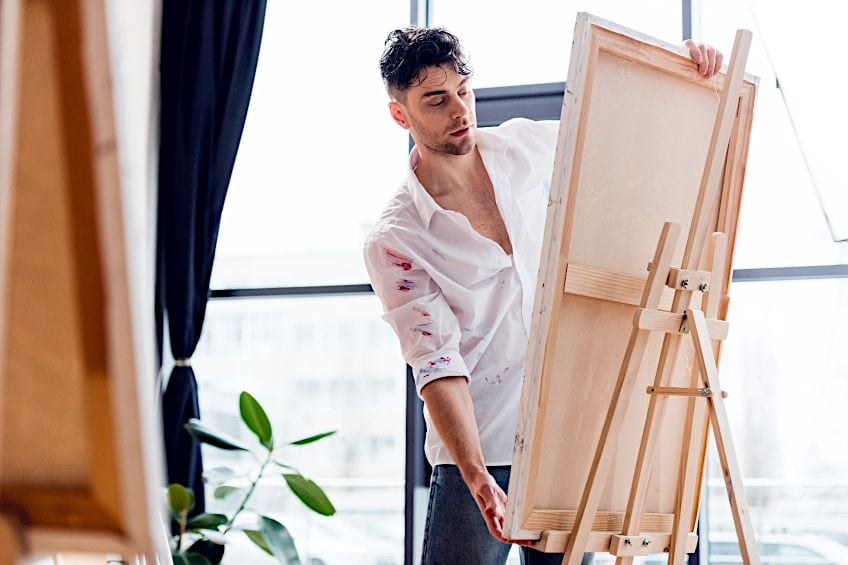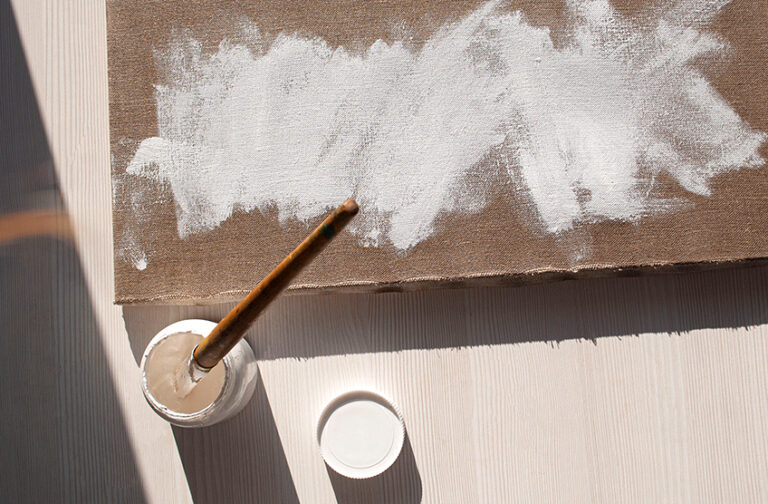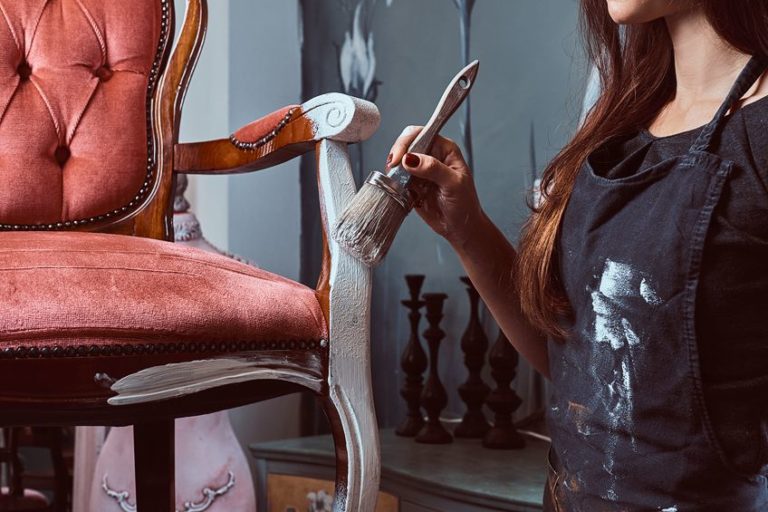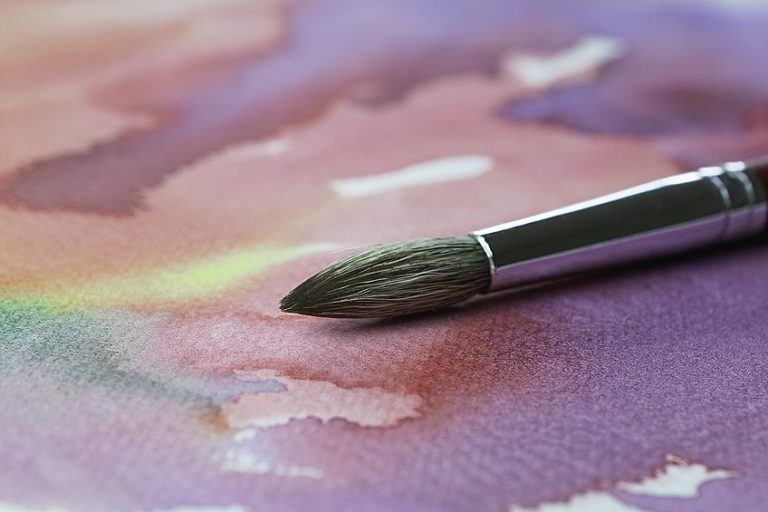Canvas Painting Tips – Learn How to Paint on Canvas Easily
This post may contain affiliate links. We may earn a small commission from purchases made through them, at no additional cost to you.
Imagine a world where you can look at a blank canvas and portray your life on it. Imagine a world of color and brightness. Imagine being able to paint a majestic sunset or the night sky. With canvas painting tips, this is all possible. In this article, we will navigate the journey of painting on canvas and will be sharing some canvas painting tips for the beginner as well as the more advanced artists. The world is a beautiful place and capturing special moments on canvas is not only special, but it is also a privilege.
Canvas Painting Tips for Beginners
How to start canvas painting is a question asked by many. Luckily, it is simple with little effort required. Before we start on this magical journey of experiencing a new world of creating acrylic art on canvas, there are a few instructions to follow so that once the masterpiece is finished, you are left feeling that you have achieved something brilliant.
This will not only encourage you to keep on trying but you may even find that you could start earning good money by advancing your art skills.
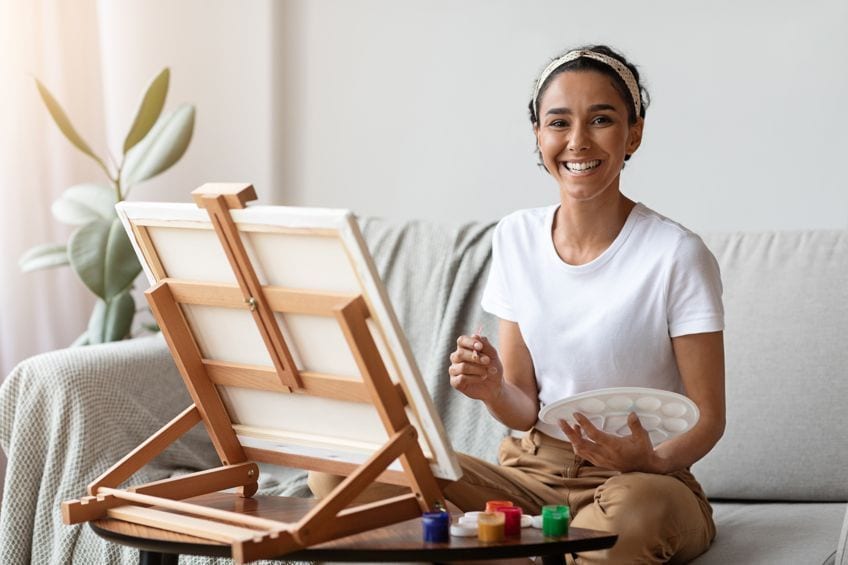
Sketching
Before you learn how to paint on canvas, a good trick is to first sketch the drawing you want to paint. Sketching can be done with a charcoal pencil. Simply start with the basic outline of the picture that you want to paint on your canvas but be careful not to incorporate too much fine detail in your sketch as once you start learning how to paint with canvas, the fine detail will disappear behind the paint. Large outlines of shapes are recommended.
The charcoal pencil is the best implement to use as it will dissolve once the color has been added to the canvas so don’t worry about it showing through the paint.
Mixing Paints
Before you sit down to contemplate the picture you are going to paint, one of the big tips for painting canvas is to get everything ready so that you don’t have to keep on getting up to go and find things around the house. One of the first things to do is to mix the paint colors that you want to use. Starting with the primary colors is always a good idea. Start with red, blue, and yellow. You can add white as well. On a palette place these three colors separately so they don’t touch and mix. Primary colors can be mixed to make additional secondary colors and white can be added to lighten a color if needed.

If you mix a little red with blue, your end color will be purple. If you mix yellow and red, you will land up with an orange color. Blue and yellow will result in green color. Experimenting with different colors on a palette is always a great tip for painting canvas and will open up your world to more colors, especially if you are working on a strict budget and cannot afford to buy more than three of four colors at a time. To mix the colors, you can use a paintbrush or even a palette knife.
Painting the Background
A good canvas painting tip is to first paint the canvas with a background. The background is usually painted with a two-inch brush. The brush is wide and will cover a bigger surface than a smaller brush. Simply dip the brush into water and dab excess water off the brush and then apply the acrylic paint by only dipping the end of the brush into the paint. Just the tip of the brush should touch the paint. Using broad strokes paint left to right over the entire canvas from top to bottom.
This same brush can be used to paint the outlines of the larger details that you wish to see in the painting, for instance, if you want to paint flowers as a background then the petals and other bigger pictures can be painted at this stage. Remember to use solid lines.
Heavy and Fine Lines
An angled paintbrush is a much wider brush than others and tapers off into a fine tip. If you angle the brush towards a wide edge, you will naturally get a wide line, however, if you angle the brush towards the tip, your line will then become very fine.
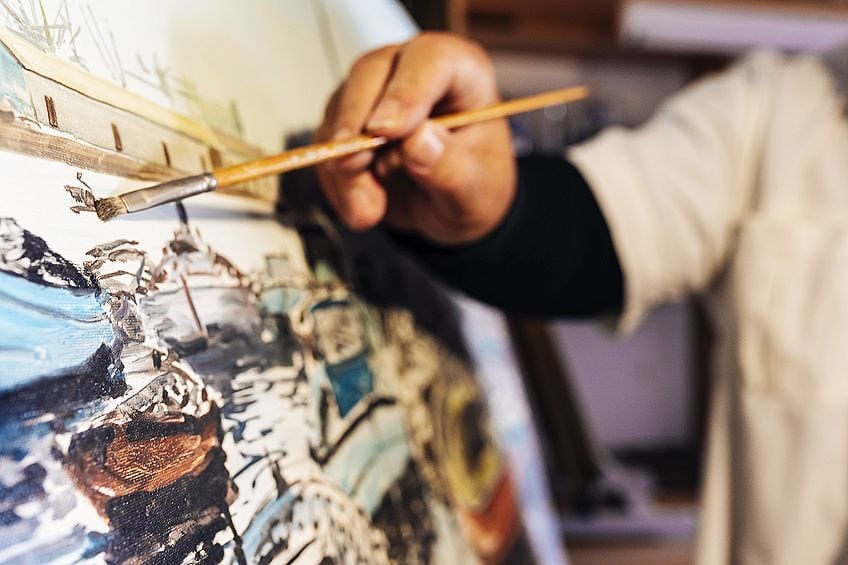
Smaller Details
A round brush will paint fine lines. When it comes to adding the smaller details to your painting such as the veins in a leaf, a very small round brush would be best to accomplish this. In the art world, the Number Eight Brush is bigger so you will get broader lines and the Number Zero brush is what you will use for the tiny details.
Once you have dipped your brush into water and have dabbed off the excess water, dip the brush tip into the paint and start painting.
Advanced Techniques
Once you have perfected the beginning stages of canvas painting tips, you can safely think of yourself as an advanced artist and we have a few advanced techniques that you can use to make your painting look even more professional.
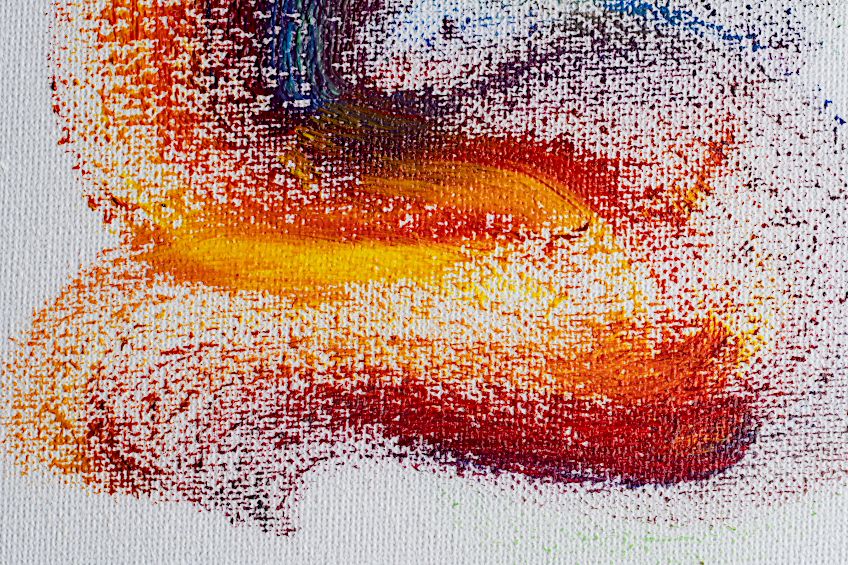
Dry Brushing
To obtain a feathery look, try dry brushing with your paintbrush. This is a technique that you can use with almost any paintbrush, the only difference is that you will not dip your brush into any water first but rather dip your brush straight into the paint, dab excess paint off onto a cloth, and then run the tip of the brush over the canvas. This will result in a feathery look with no harsh lines that will interfere with your result.
The best tips and tricks to this method are to make sure that your paintbrush is dry and not to get a lot of paint onto the brush. This technique can only be achieved with a wider brush.
Using a Fan Brush
A fan brush will create multiple lines at the same time. When pushing down on the brush, the brush will spread out like a fan which is easier for this brush to create pictures such as palm leaves. The longer side is used to make edges and the fan is to make the thinner lines look a little thicker.
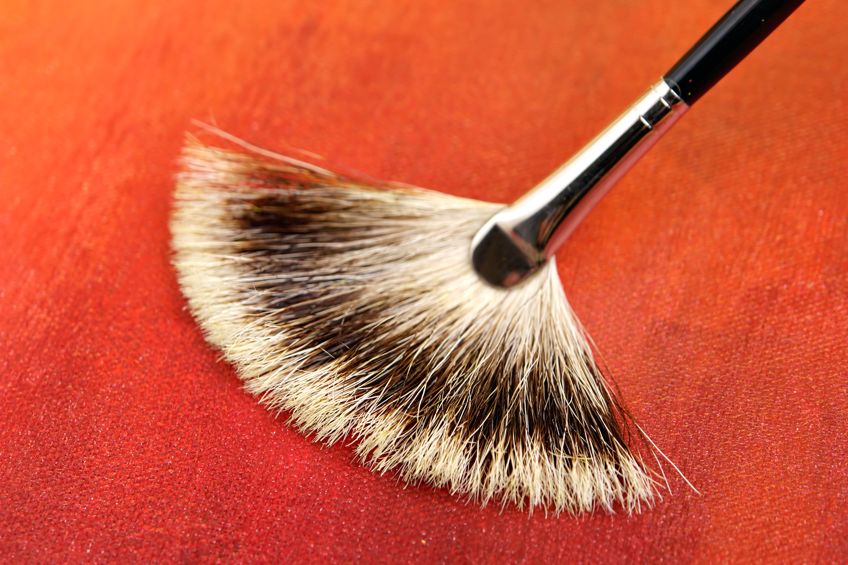
Splatter Paint and Pouring Paint
If the canvas is placed on a floor, right side up and the artist stands over the painting and pours paint directly onto the canvas, you will achieve a painting that will be one of a kind. It is a completely different technique from that of painting. The splatter of paint using a toothbrush also creates a new dimension to a canvas. These two techniques allow you to create a little crazy into your masterpiece.
The paint splatter effect is a brilliant way to add detail if you are thinking about painting a night sky as the splatters will resemble far away stars.
Incorporating these two techniques when you first learn how to paint on canvas is the only time you will mix the paint with water. The paint should be mixed by adding one part of water to two parts of the paint. If you have a cup of water with 5 ml, then simply add 10 ml of paint to that cup of water and stir well before starting on the best tips and tricks that we have just highlighted under this section.
Thick Texture
Using a palette knife instead of a brush will give the painting an almost 3D effect. This technique in the art world is called impasto. The palette knife will allow you to pick up paint and apply it to the canvas creating an unusual texture to your painting.
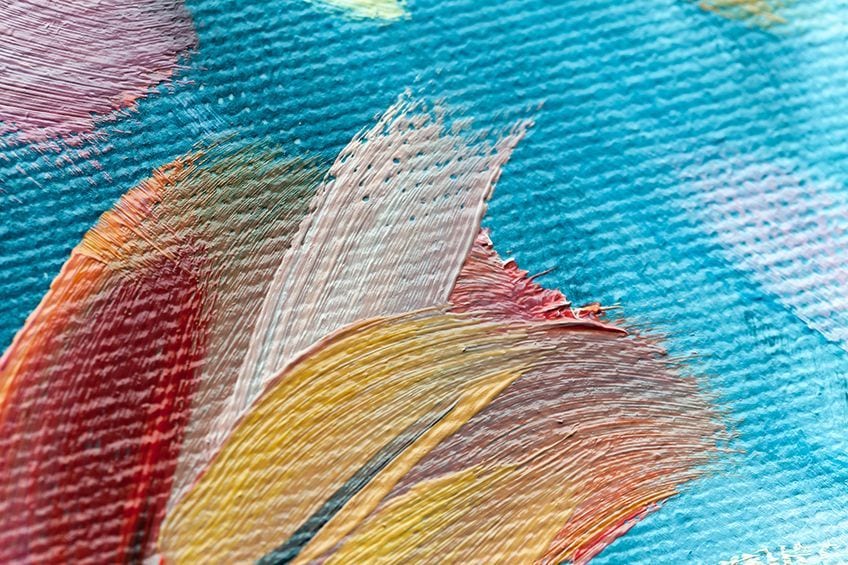
Creating Textures
There are some pretty interesting things that you can use in your house to incorporate texture into your painting. Sponges give a great background effect to a painting and even scrunched-up paper towels can give a different effect. Remember that acrylic paint is permanent and once dried, it cannot be removed, so if you are going to look for ideas around the house to help you with different techniques.
Make sure that you won’t need to use them afterward as they will have to be thrown away.
Some Tricks and Tips for Painting on Canvas
As you learn how to start canvas painting, there are other handy tips for painting on canvas that does not include specific techniques. Have a look below for some important things to remember.

Acrylic Paint Dries Very Fast
Because acrylic paint dries very fast, this essentially means that you cannot spend a lot of time painting your picture and hence the suggestion earlier on that you first sketch the picture that you have in mind. When you mix colors, this should be done quite fast. The longer you dilly-dally over what colors to mix, the quicker the paint will dry and will not be usable. To slow down the quick drying process one of the best tips and tricks is to place a wet paper towel over the palette and then you can mix your colors on the wet paper towel which also won’t change the consistency of the paint.
A gel medium which is also available at arts and crafts shops can also be added to the paint and this will also help to extend the life of the acrylic paint.
When to Use Water
The best tip and trick we can mention is that water is not needed when painting acrylic art on canvas. The only time to use water is to dip your paintbrush to change colors. Once you have dipped your paintbrush into the water, it should be dabbed off on a cloth or towel to remove any excess water from the brush. If water is used for acrylic art on canvas the water could make your bright colors seem dull and if too much water is on the paintbrush, the water could run down the canvas.
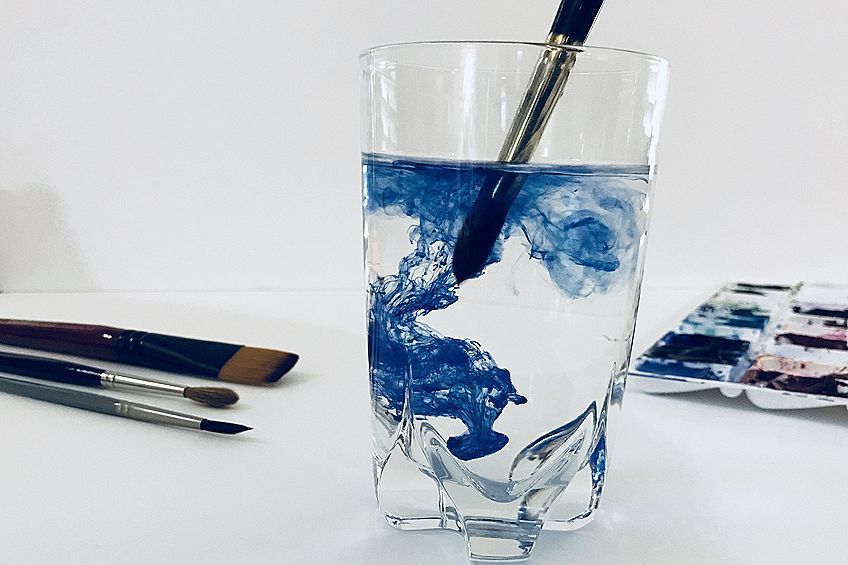
Misting Paint
Instead of adding water to the paint and causing it to become thinner, another tip is to use a spray bottle to lightly spray over the color now and again to stop the paint on your palette from drying out too quickly.
Add a bit of lukewarm water for this process.
Let’s Talk Canvas
Before any good painter learns how to paint on canvas, it is important to know a little more about canvas to know how to start canvas painting. When you use canvas to paint on, you are going back centuries in the art world. Painting on canvas dates back right to the 16th century and remarkably one of the oldest paintings on canvas, painted with oils, dates back to the early 14th century.
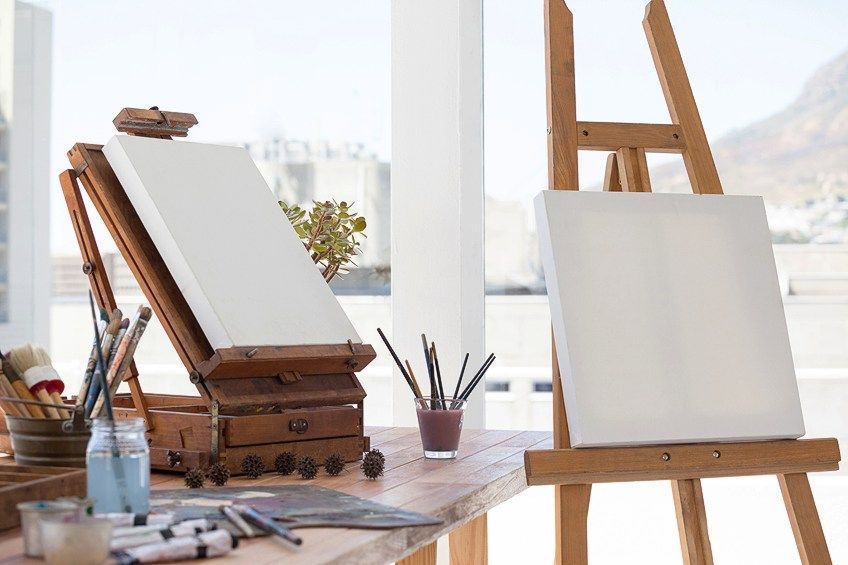
Most professional artists started off using canvas and the important thing is knowing what type of canvas you prefer to work with which will determine how you go forward with your passion. There are many different types of canvas available in the marketplace today. You should decide whether you want to use a canvas that has been primed or would you prefer priming it Yourself. You can have a choice of a cotton or linen canvas and even stretched canvases can be an option. The primed canvas remains the most popular canvas when you learn how to paint on canvas with acrylic paint.
There are quite a few choices when it comes to purchasing canvas and it is therefore important to know what canvas you are wanting to buy.
Cotton Canvas
This is an affordable choice when painters are just starting on this new and great adventure. A primed cotton canvas will last a long time and is very durable. This type of canvas is already primed with an acrylic primer such as gesso before it is put onto the shelves to be sold.

Linen Canvas
This canvas is made from much more durable material and is rigid and lasts much longer than cotton. It is made from flax and is primed with oil-based primers. Most professional artists today will use this canvas as most professionals prefer to work with water and oil-based paints.
This canvas will also not allow the painting to become brittle over time as it manages to maintain all its natural oils.
Canvas Boards
These are very common canvases that are used by student painters. The canvas is stretched over a hard backing board, normally a fiberboard, and will have the same texture as the canvas but it is much cheaper than canvas and therefore is the best option of canvas to use to start experimenting with.
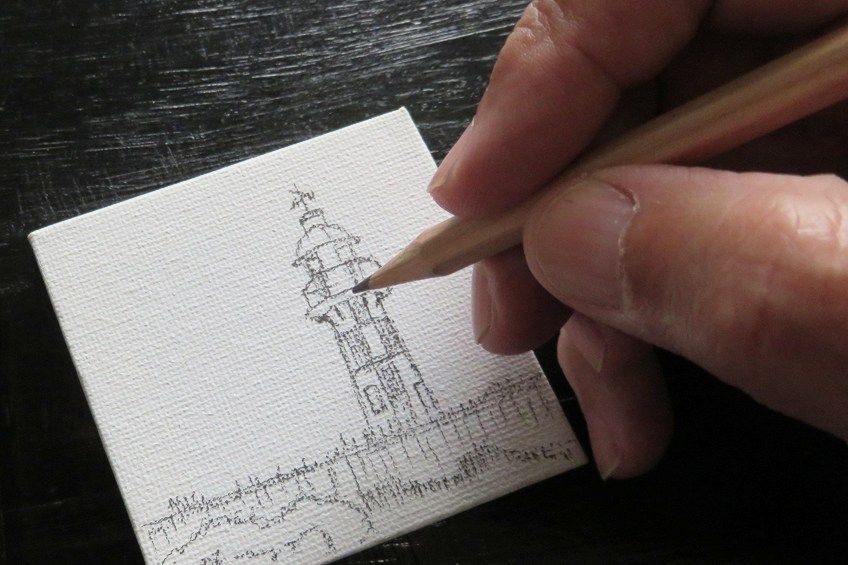
Pre-Primed vs. Unprimed Canvas: Which Is Better?
To avoid bleeding, when painting on canvas, the canvas needs to be primed, this means that you need to paint a layer of primer to the canvas before you start painting with acrylic paints. The primer on the canvas will give a firm grip when acrylic paints are applied and therefore the pigment of the paint will be enhanced and will last a long time.
There will be no bleeding and no dull patches either. Primed canvases are the most popular canvasses sold in arts and crafts shops around the world.
Priming Your Canvas
This process is not as difficult as you may think. All that it is, if you think about it, is painting an extra layer onto the canvas before you can start adding color. To prime the canvas, you will need a bottle of acrylic gesso and a paintbrush. Gesso can be purchased from any arts and craft shop.
It is sold in bottles or jars. Simply dip your brush into the gesso and paint in even strokes from left to right and top to bottom of the canvas making sure the entire surface is painted. Leave to dry for about an hour until it is dry to the touch and then you can start working on all the canvas painting tips that we have outlined in this article.
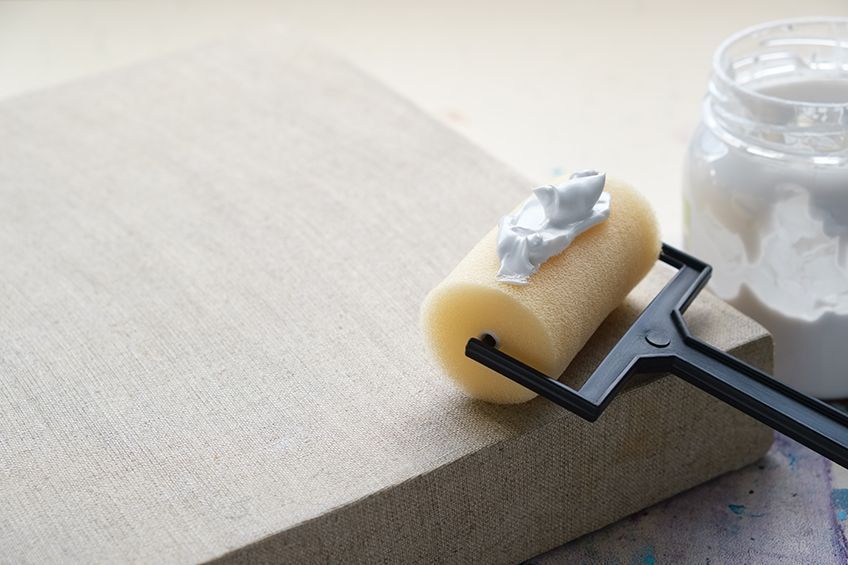
What to Paint
Often when starting on this new adventure, people have no idea what they are going to paint. We have listed a few basic ideas to help you as you navigate your way to becoming a more advanced painter. Your imagination is key in thinking about what to paint. Once you let that run, there will be no ending to the possibilities.
- The night sky is always a firm favorite. The background will be different shades of black and gray, a full moon will be white and there will be plenty of stars. The night sky is easy to paint and will not take a lot of time.
- Painting flowers is also a good idea when first learning. The best way to learn how to paint on canvas is by painting flowers because they don’t require a solid outline and dabs of paint in clusters will resemble flowers.
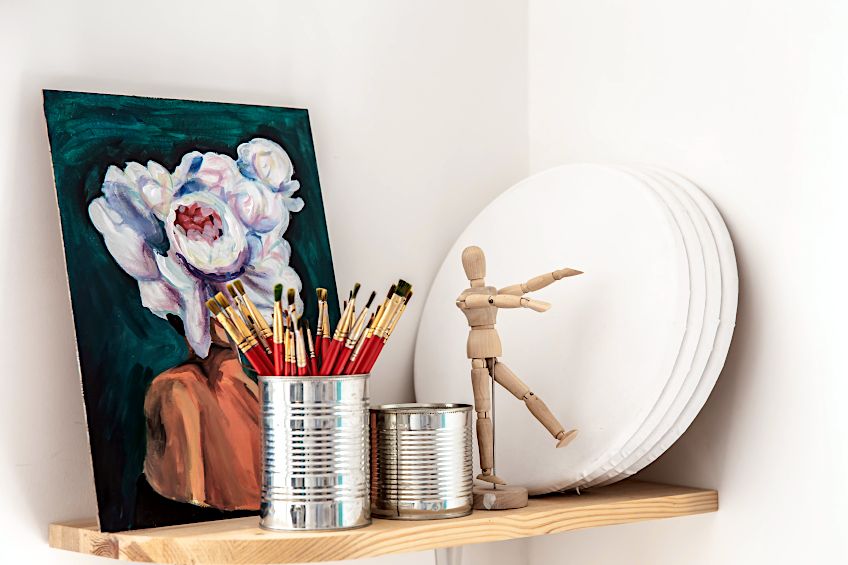
- Bold colors can be used and you can also make the paint thicker or thinner. Just as easy as it is to paint flowers, so too is the technique for painting trees also easy.
- If you don’t have a steady hand to paint straight lines, then learning how to paint a tree is the best canvas painting tip we can give you. No tree is straight, and painting crooked branches will just add to the mystique of your painting.
- Landscapes are also very popular for beginner artists. Just like trees, there are no perfectly straight landscapes so a steady hand is not essential. The best thing about learning how to paint on canvas is that when painting landscapes, if a mistake is made, then it can easily be altered into long grass or even rocks and stones.
Mother Nature offers beautiful paintings all around us and how fortunate we are that we can use canvas painting tips and the best tips and tricks to bring nature right into our homes. Painting on canvas, allows us to showcase our vision of all things beautiful around us. We hope you have enjoyed this journey with us and that our canvas painting tips have opened your imagination to a whole new world of color.
Frequently Asked Questions
How Do You Know if the Canvas Is Primed?
That’s an easy question to answer. If you are buying your canvas from an arts and crafts shop, the majority of them are already primed for you to start your painting journey straight away. A simple look at the label will say something like along the lines of it being gesso-primed, which essentially means that the people who manufactured the canvas have treated it with a gesso primer before putting it on the shelves for selling.
What Does Gesso Mean?
Gesso is a product that is used on an untreated canvas surface, which simply means that you are treating the canvas properly with a primer so that when you start painting, the acrylic art on canvas won’t bleed or seep through. Gesso is sold in all arts and craft shops and is sold in bottles. The paste is painted onto the canvas before acrylic art on canvas can be captured. Gesso is a product that you will only need to use if your canvas has not been primed.
Can You Paint Acrylic Directly on Canvas?
Yes, you certainly can use acrylic paint to create acrylic art on canvas. While there are plenty of different paint types that can be used when you learn how to paint on canvas, the most popular paint for canvas is acrylic paint as it is easy to use and dries fast!
Larissa Meyer is a 32-year-old mother from Michigan and creative spirit since childhood. Her passion for painting and drawing has led her to an education as an illustrator and a career as a freelance graphic designer. She has a Bachelor of Fine Arts in Illustration and a degree in Graphic Design. Larissa is a talented artist who is able to master a wide range of styles and techniques to bring her artistic vision to life. Her greatest passion is currently fluid painting and epoxy resin art. Larissa’s love for art and her knowledge and experience in illustration make her the perfect Creative Director for our fluid-painting.com team. She is the creative head of our team and shares her passion and knowledge with our community through articles and tutorials.
As a mother of a 2-year-old daughter, Larissa also understands the importance of fostering creativity in early childhood. She uses her experience and knowledge to help other parents inspire their children and develop their artistic skills as well.
Learn more about Larissa Meyer and about us.

